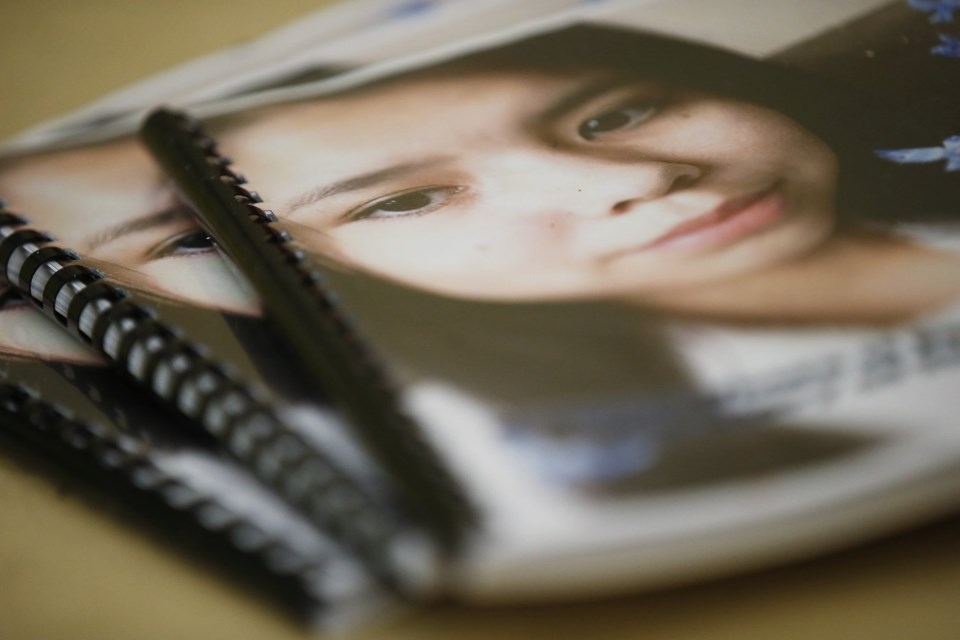WINNIPEG — When Elroy Fontaine thinks about his older sister, Tina Fontaine, his mind takes him to a park in Winnipeg's Point Douglas neighbourhood.
It's where the two would sometimes hang out together.
A decade after the tragic death of the 15-year-old girl, one that shocked the country and was the catalyst for a national inquiry into missing and murdered Indigenous women and girls, Elroy Fontaine still stops by the special spot.
The siblings spent time in provincial care but would see each other during scheduled visits that included Slurpee runs and park hangs.
"She would sometimes take me out away from the visits ... she let me play at the park," said the 18-year-old.
"Tina would be very protective and motherly."
Saturday marks the 10-year anniversary of the day it's believed the girl from Sagkeeng Anicinabe Nation died.
Elroy Fontaine plans to honour the day by hosting a candlelight vigil where Tina's body was discovered.
The girl had disappeared into the streets of Winnipeg, before her small, weighted-down body wrapped in plastic and a duvet cover was pulled from the Red River on Aug. 17, 2014.
Tina was raised by a great-aunt for much of her life but had been living in a Winnipeg hotel under the care of child and family services. She was reported missing a week before her body was found.
The following year, police charged a man with second-degree murder in her death. A jury found Raymond Cormier not guilty in 2018.
Tina's death marked a turning point in how society treated and viewed missing and murdered Indigenous women and girls. Advocates and family members, who had long been calling for political action to address staggering rates of violence against Indigenous women and girls, raised their voices even louder and demanded change.
"When my sister became a poster child and there were rallies and it became national, I think it opened a lot of people's eyes," said Elroy Fontaine.
"It's sad it had to take someone's life for people to realize."
Shortly after Tina's body was discovered, a huge crowd marched through Winnipeg's downtown demanding justice.
Manitoba's advocate for children and youth, Sherry Gott, remembers the day clearly. She was a social worker at the time.
"The walk was truly so quiet, and yet there were hundreds of people there. I was shocked like everyone else and outraged."
In the days, weeks and months that followed, there was change on different levels.
Public pressure forced the province to stop using hotels as placements for youth in care.
The Indigenous-led safety group Bear Clan Patrol re-emerged to canvass Winnipeg streets for missing Indigenous people.
The federal Liberal government, under newly elected Prime Minister Justin Trudeau, committed to a national inquiry. It published its final report in 2019, including 231 calls for justice.
Some advocates say Tina's death brought more awareness but they still see children and youth being sexually exploited.
The advocate's office completed an investigation into the services Tina received and issued recommendations for provincial bodies. While some have been completed, the challenges seem to persist.
"We're not seeing real change on the ground at the systemic level," said Gott.
Advocates say Winnipeg is still considered ground zero for missing and murdered Indigenous women and girls, while Indigenous children and youth continue to be disproportionately represented in the child welfare system.
Over the last year, Gott's office has seen three young people who were sexually exploited die from drug poisoning. This further underscores the need for the provincial government to develop a co-ordinated response for mental health, addictions and abuse, she said.
"They need to show moral courage and make this a priority and respond to the kids that are falling through the cracks."
Shanlee Scott says she sees it every day.
Scott is executive director of the resource centre Ndinawemaaganag Endaawaad, which operates Tina's Safe Haven, named after Tina Fontaine.
The drop-in centre works with youth who have no place to stay, no way to access mental health supports or health care and have been deprived of cultural connections.
The organization partners with therapy groups and Indigenous health providers to address the gaps in care.
"Tina's (Safe Haven) isn't enough ... Tina's is serving an immediate need. It is not a long-term solution," said Scott.
Gott said she'd like to see a third-party review of Tracia's Trust, the province's sexual exploitation strategy launched in 2008, and for the government to release a plan on how it aims to address the national inquiry's calls for justice.
Cabinet ministers Bernadette Smith and Nahanni Fontaine, who are Indigenous, addressed the anniversary earlier this week, saying the NDP government is committed to adhering to the recommendations from the national inquiry and the Truth and Reconciliation Commission.
They pointed to the government's Matriarch Circle to assist in the work and a grant program in partnership with the Winnipeg Foundation to support families of the missing and murdered.
"We all have a responsibility. It's not just governments. It's not just police. It's a society issue," said Smith, whose sister Claudette Osborne-Tyo disappeared in 2008.
The ministers said the government plans to release its strategy on missing and murdered Indigenous women, girls and two-spirit people this fall.
Meanwhile, Elroy Fontaine finds solace in knowing his sister's legacy lives on.
"It helps a lot to know that there's still supporters ... she's not forgotten."
This report by The Canadian Press was first published Aug. 10, 2024.
-- With files from Steve Lambert
Brittany Hobson, The Canadian Press


